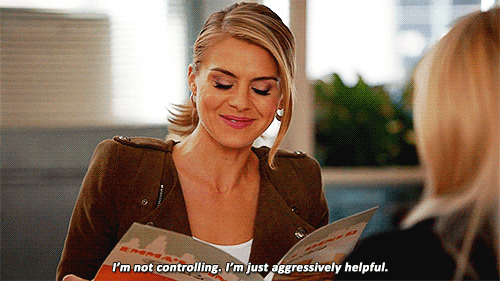We all have our vices, and our unique personalities don’t always bring out the best in one another. In your personal life, you can avoid “toxic people.” But at work? Not an option. It’s better to learn how to work with different personality types, even the toxic ones, in order to make your workplace a happy and healthy one.
Here are the five most toxic personalities in any work environment and how to handle them.
The Bully
We thought high school was the worst of it, but boy, we were wrong. Workplace bullies can be categorized in two groups—those who are consistently losing their temper and are quick to yell at anyone near them and those who are passive aggressive in their approach. All bullies have a negative attitude and are quick to criticize any work other than their own. Bullies can be highly manipulative, egotistical, and just a general pain to work with.

How to handle: Bullies are best handled with direct confrontation, and most tend to back down once confronted. You don’t have to bully back; a simple direct “please don’t interrupt/be pushy/speak to me that way” usually does the trick.
The Chatty Kathy
The chatty Kathy is probably the most innocent of the toxic players, however, it doesn’t make her any less of a distraction in the office. Kathy just wants to know everything about everyone. She is eager to start up conversation at the most inopportune times, and it’s usually about the new sweater she bought her cat. Kathy is the biggest gossip, but the worst part is that she is continually starting unnecessary drama in the office.
How to handle: Chatty Kathy’s don’t want to follow you around, so the easiest way to show them you are done with the conversation: Stand up. Begin walking away as if you have somewhere to be. If they continue, politely tell them you are busy and need to finish the conversation later.
The Scapegoat
You will find the office scapegoat playing victim to anyone who will listen. And after a while, the scapegoat even starts to believe they are the victim, looking for reasons why other people might be talking badly about them. This is the person saying “that’s not in my job description” when asked why they didn’t do something. Nothing is their problem and they are quick to throw even their closest ally under the bus if they think it help get them ahead in the eyes of the upper management.

How to handle: No one wants to listen to someone’s constant negativity, so start changing the subject. Once they realize you won’t feed their behavior, if they want to talk to you they’ll start conversations about different topics instead.
The Control Freak
There’s a difference between managing a team and telling people what to do. There is a difference in asking for status updates and micromanaging. (The control freak is the latter of the two.) Just because you are team lead or a manager does not mean you are always right. Control freaks tend to believe that it’s a one-person show and their jobs are more important than the whole team (or company). If these employees aren’t already in positions of authority, they’re gunning for them. They’re usually stressed to the max and can be incredibly pretentious.

How to handle: Play Switzerland and find some neutral ground when working together. Take initiative to do something before they know about it. The more stressed they are, the more controlling they get. This will also show them that you’re trustworthy enough to get your share done.
The Slacker
If the boss is out, you can bet your ass their employees are definitely not coming in either. The slacker is the worst of the toxic coworkers. These are the employees who, ever so slyly, push their work off onto others without them even noticing. That’s how good they are; they have been practicing this since college, maybe even high school. They’re eager to work in groups so they can take credit for the work others do because it was a “team effort.” Slackers are the biggest procrastinators, and worst of all, they can be envious of you for putting in the smallest amount of work. They don’t mind watching you fail, because their fallback plan is to claim they didn’t agree, or work on the project (and they won’t be lying)!

How to handle: Try your hardest to avoid working with them. They’re already giving themselves a bad name and you don’t want to be roped into the same category. If you must work together, document everything you do so you can show the work you put in compared to the slacker.
No one wants to work with these five, but the first thing you must do is become self-aware. If you don’t recognize anyone on this list, YOU might actually be one of them. If that’s the case, you should address that issue before you complain about the other toxic people in your office.
Learning your own limits and setting boundaries for your coworkers will allow you to focus on solutions rather than the problems with different personalities in the office. Remember: Personality conflicts take two people. If you dodge and refuse to engage, you’ll be golden.

